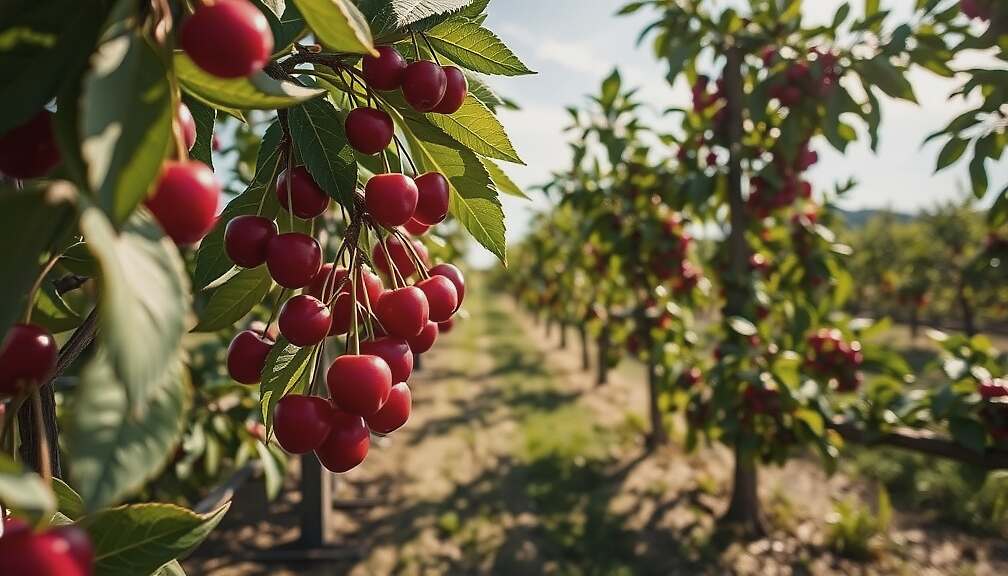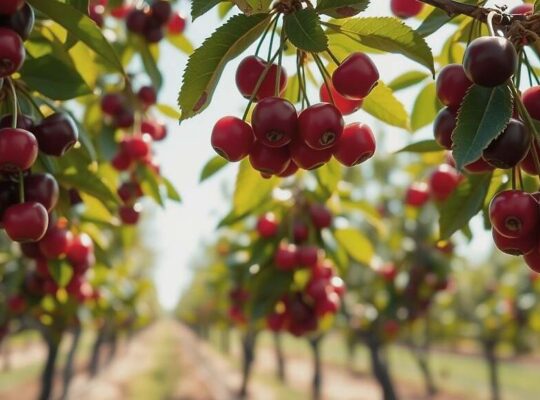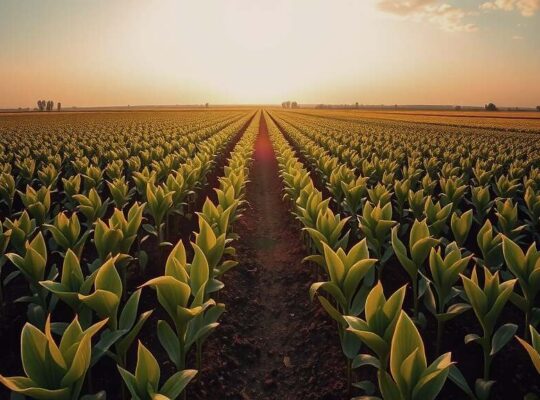Germany’s fruit growers have reported a strong cherry harvest for the summer of 2025. According to final estimates released Monday by the Federal Statistical Office (Destatis), a total of 47,100 tonnes of cherries were harvested. This breakdown comprises 79 percent, or 37,300 tonnes, of sweet cherries and 21 percent, representing 9,800 tonnes, of sour cherries.
The 2025 harvest marks a 4.2 percent increase compared to the ten-year average from 2015 to 2024, which stood at 45,200 tonnes. The volume significantly exceeds the notably below-average harvest of 35,400 tonnes recorded in the previous year, representing an increase of approximately 11,700 tonnes, or a 33.1 percent rise.
The final estimate for the sweet cherry harvest reached 37,300 tonnes; a gain of 9,400 tonnes and a 33.6 percent increase over the comparatively low volume experienced the prior year due to weather conditions. This figure also demonstrates an increase of 4,400 tonnes, or 13.3 percent, when compared to the ten-year average of 32,900 tonnes. The favorable sweet cherry yield was facilitated by mild weather during the flowering period and a notable absence of frost or hail events across most growing regions.
Sweet cherries are cultivated across 5,700 hectares within Germany. Baden-Württemberg leads in cultivation with 2,600 hectares, representing the most significant contribution to the national sweet cherry production. The region accounts for 47 percent of the total German sweet cherry yield at 17,600 tonnes. Lower Saxony follows with 5,000 tonnes harvested from 480 hectares. Despite larger sweet cherry cultivation areas in Rhineland-Palatinate (660 hectares) and Bavaria (540 hectares), the respective harvests were comparatively lower at 3,700 and 1,800 tonnes.
While a slight decrease of 250 tonnes (-1 percent) was recorded in Baden-Württemberg compared to the previous year, Lower Saxony reported a significant increase in its sweet cherry harvest, surpassing last year’s volume by 2,000 tonnes (+67 percent). This trend was mirrored in Rhineland-Palatinate (+76 percent) and Bavaria (+30 percent). The regional variations are attributed to Baden-Württemberg’s exceptionally strong sweet cherry harvest last year, while other regions experienced weather-related reductions in yields.
The final estimate for the sour cherry harvest totaled 9,800 tonnes, exceeding the 7,500-tonne harvest of the weather-impacted previous year by 31.3 percent. Despite an initial preliminary estimate in June of 11,700 tonnes, which nearly matched the ten-year average of 12,300 tonnes, the final volume fell short at 20.0 percent below that average. The reduced yields are also in part due to a reduction in cultivated area for sour cherries, shrinking from 2,000 hectares to 1,500 hectares (-25 percent).
Rhineland-Palatinate holds the largest area dedicated to sour cherry cultivation at 460 hectares, followed by Saxony (300 hectares) and Baden-Württemberg (240 hectares). The largest harvest volume originates from Rhineland-Palatinate at 2,700 tonnes (+40 percent compared to the prior year), followed by Thuringia (1,900 tonnes, +179 percent) and Saxony (1,800 tonnes, +1,249 percent). This illustrates the particularly challenging harvest year for sour cherries and other fruits experienced last year, with near-complete harvest failures reported in specific eastern German regions.




